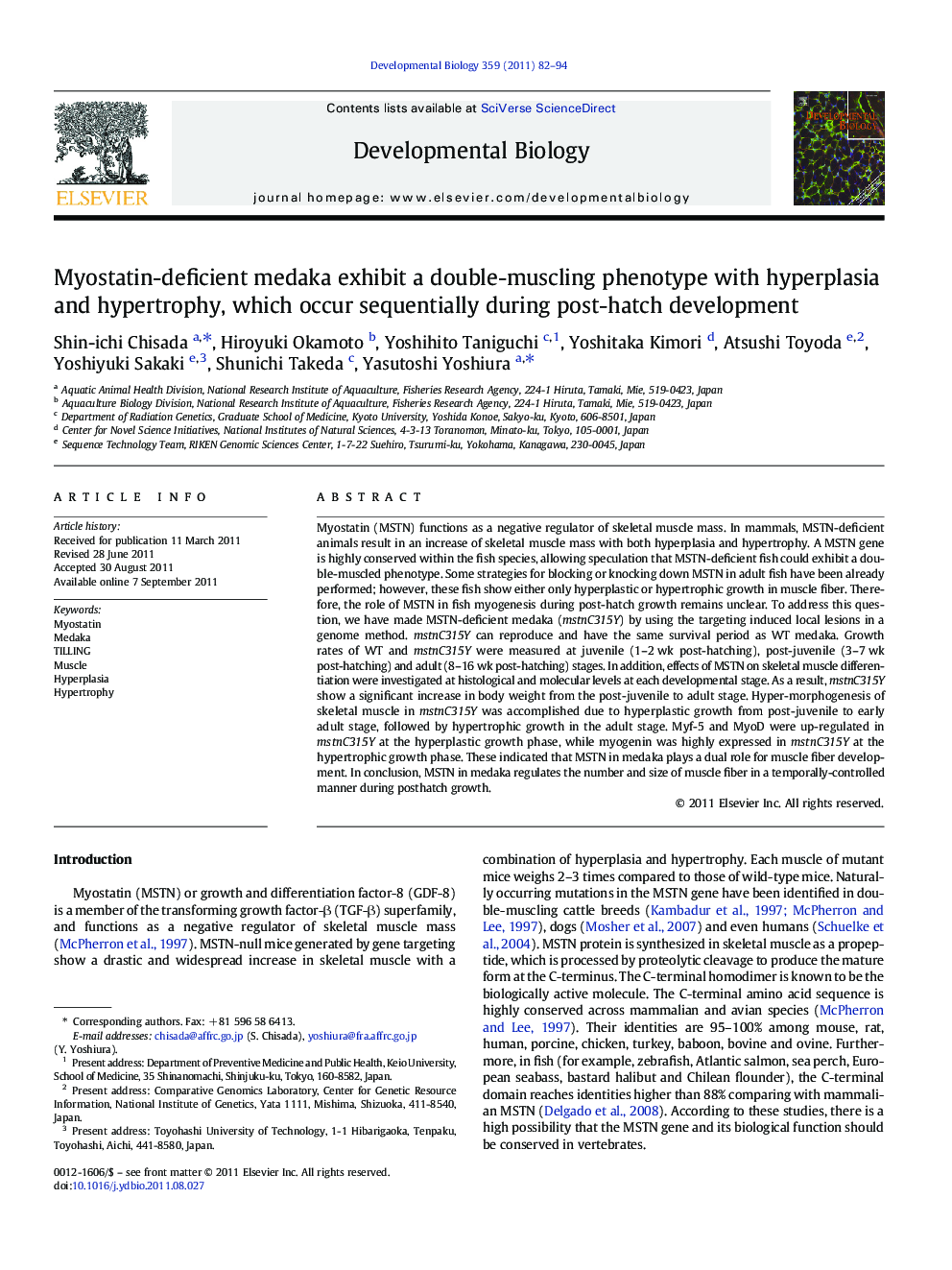| کد مقاله | کد نشریه | سال انتشار | مقاله انگلیسی | نسخه تمام متن |
|---|---|---|---|---|
| 2173593 | 1093738 | 2011 | 13 صفحه PDF | دانلود رایگان |

Myostatin (MSTN) functions as a negative regulator of skeletal muscle mass. In mammals, MSTN-deficient animals result in an increase of skeletal muscle mass with both hyperplasia and hypertrophy. A MSTN gene is highly conserved within the fish species, allowing speculation that MSTN-deficient fish could exhibit a double-muscled phenotype. Some strategies for blocking or knocking down MSTN in adult fish have been already performed; however, these fish show either only hyperplastic or hypertrophic growth in muscle fiber. Therefore, the role of MSTN in fish myogenesis during post-hatch growth remains unclear. To address this question, we have made MSTN-deficient medaka (mstnC315Y) by using the targeting induced local lesions in a genome method. mstnC315Y can reproduce and have the same survival period as WT medaka. Growth rates of WT and mstnC315Y were measured at juvenile (1–2 wk post-hatching), post-juvenile (3–7 wk post-hatching) and adult (8–16 wk post-hatching) stages. In addition, effects of MSTN on skeletal muscle differentiation were investigated at histological and molecular levels at each developmental stage. As a result, mstnC315Y show a significant increase in body weight from the post-juvenile to adult stage. Hyper-morphogenesis of skeletal muscle in mstnC315Y was accomplished due to hyperplastic growth from post-juvenile to early adult stage, followed by hypertrophic growth in the adult stage. Myf-5 and MyoD were up-regulated in mstnC315Y at the hyperplastic growth phase, while myogenin was highly expressed in mstnC315Y at the hypertrophic growth phase. These indicated that MSTN in medaka plays a dual role for muscle fiber development. In conclusion, MSTN in medaka regulates the number and size of muscle fiber in a temporally-controlled manner during posthatch growth.
► Myostatin (MSTN) functions as a negative regulator of skeletal muscle mass.
► We make medaka with a MSTN deficient signaling pathway by the TILLING method.
► The defective mutant has an increased muscle mass with hyperplasia and hypertrophy.
► Hyperplasia occurs mainly before adult fish and hypertrophy occurs in the adult stage.
► MSTN in medaka temporally regulates the number and size of muscle fibers.
Journal: Developmental Biology - Volume 359, Issue 1, 1 November 2011, Pages 82–94